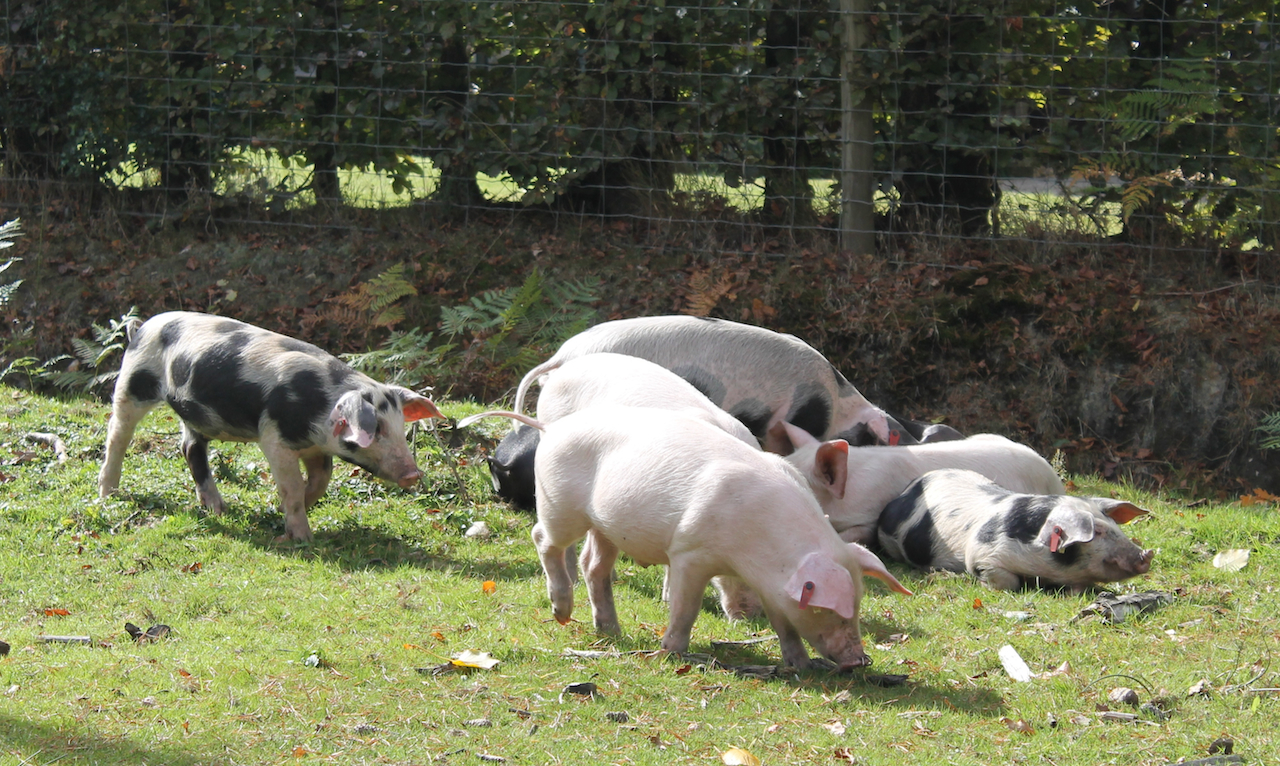
The smell of good meadow hay is one of the best aromas of the countryside.
Autumn is always a busy season for farmer, smallholder and commoner alike. It is also a time of ritual, tradition, and festival that reminds us of our connection to the natural or, indeed, supernatural world. Michaelmas, which signals the end of the harvest period, has passed. By now the cereals, hay and cart straw will have been harvested from the fields, and the majority of fruits and vegetables gathered in for winter storage or processed into jams, pickles and chutneys. Harvest Festival celebrations will have been observed in local churches, schools, community centres and village halls, where excess produce is redistributed or sold to eager purchasers who stock up for the lean winter months to come. Harvest Festival coincides with the Harvest moon, the full moon that occurs closest to the autumn equinox. Harvest Festival, which began as a pagan festival of thanksgiving and generosity, has now been adopted into the Christian faith and is usually celebrated on the Sunday nearest to this date. As well as marking the end of toil from bringing in the harvest Michaelmas is also the customary time for buying and selling farms; because the outgoing farmer will have finished his crop and the incoming farmer can begin to plant or sow ready for the next harvest season. (This is why the farmer’s calendar traditionally begins in September.)
Autumn activity, tradition and festival
For the commoners this a time busy with the annual drifts or pony round-ups where the semi-feral ponies are driven into stockades, known as pounds, to be checked, marked, wormed, or fitted with florescent collars. Many of the foals that have wandered the heathland and lawns with their dams since the springtime, will be removed to their commoning owner’s holding to be kept over winter. As a result, you may begin to notice fewer foals adorning the landscape over the coming months. Pannage season is also underway; this is the time of year to see pigs roaming freely to root about in the forest undergrowth beneath canopies of yellowing autumn leaves. Their voracious appetites serve a worthy purpose because they hoover up the acorns that, when eaten in quantity, can prove so toxic to ponies and deer. Pannage pork is a local delicacy and much sought after by gourmets and other food connoisseurs. The commoners, of course, have been eating it for generations. This flavoursome meat was produced in readiness for the traditional feast period of Christmastide, by fattening up the pigs on the largess provided by the forest’s beech, chestnut and oak trees. Of course, at the end of this month comes Halloween a former pagan festival that used the sacred light of bonfires and contact with the spirits of the dead to prophesise the future. Halloween is celebrated between the bounty of autumn and the lean months of winter, when farmers, smallholders and commoners of times past would have relied on messages and portents from their dearly departed friends and relations to tell them of their coming fortunes or, to avoid misfortune, to at least put in a good word for them with the gods. Now, of course, for many people Halloween has evolved into a child-friendly festival for dressing up and playing ‘trick-or-treat’, but even this re-interpretation is based upon the redistribution of food with pranks played on those lacking in generosity.

Pannage season, where pigs are turned out on the Open Forest to scoff acorns, is a traditional practice for those commoners with Common of Mast.


You must be logged in to post a comment.